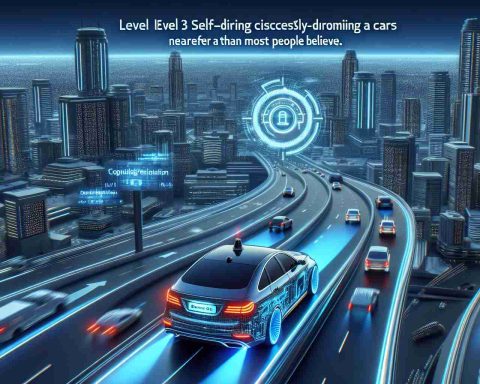Understanding EV Charging Pricing and Signage
As electric vehicles (EVs) become more common, the issue of transparent pricing at charging stations has emerged. Unlike traditional fuel stations, which clearly display prices, EV drivers often face uncertainty regarding charging costs.
Currently, most EV charging stations lack clear signage that informs users about the price per kilowatt-hour (kWh). In 2021, the EG Group took a pioneering step by becoming the first operator to feature pricing on forecourt poles at its ultra-rapid chargers. Despite this initiative, many competitors have yet to follow suit, leaving EV owners frustrated and uninformed.
Industry leaders cite a lack of regulatory requirements as a reason for the minimal pricing visibility at charging stations. Major companies like Motor Fuel Group have indicated they will only introduce signage when government mandates require it, despite calls from advocacy groups urging a change.
To address pricing, the government has laid down new regulations for 2024, mandating all new charging points to display the cost per kWh transparently. This pricing, inclusive of connection fees, will be visible on charging units, various applications, or websites. EV owners can also use apps like ZapMap to locate chargers and check prices beforehand.
Additionally, as of November 2024, contactless payment options will be mandatory for all public charging points over 8kW, streamlining the payment process for users.
The Broader Implications of EV Charging Transparency
The expansion of electric vehicles (EVs) on our roads carries significant ramifications for society and the global economy. As millions transition from fossil fuels to electric power, the demand for transparent EV charging pricing becomes paramount, not only for consumers but also for the shaping of a sustainable infrastructure.
Currently, the ambiguity surrounding charging costs can deter potential EV buyers, perpetuating reliance on traditional gasoline vehicles. Boosting consumer confidence through clear pricing can catalyze a larger shift toward electric mobility, ultimately aiding in the fight against climate change. As governments worldwide aim to reduce carbon emissions—with targets of net-zero emissions by 2050—the synchronization of EV infrastructure with consumer expectations will be critical.
Moreover, the introduction of clear pricing and mandatory contactless payments by 2024 reflects a broader trend towards the digitization of transportation services. This evolution is expected to create a more integrated economy, where users can seamlessly pay and manage their transportation costs through technology. Failure to adapt, however, could result in a fragmented market, stalling progress toward greener alternatives.
On the environmental front, improved access to transparent pricing may encourage broader EV adoption—which in turn can reduce urban pollution levels and lower public health costs associated with air quality. This shift will not only foster a cleaner environment but could also spark innovations in energy management and renewable energy integration, reinforcing the significance of consumer-driven initiatives in shaping a sustainable future.
Seizing the Future: How Charged Pricing Changes the EV Landscape
Understanding EV Charging Pricing and Signage
With the accelerated adoption of electric vehicles (EVs) across the globe, the conversation surrounding transparent pricing at charging stations has become increasingly pertinent. Unlike traditional gas stations, which provide clear price displays, many EV drivers encounter ambiguity about the costs associated with charging their vehicles.
# The Current State of EV Charging Pricing
As it stands, a significant proportion of EV charging stations suffer from inadequate signage that fails to inform users of the price per kilowatt-hour (kWh). For instance, in 2021, the EG Group made headlines as the first operator to implement pricing displays on forecourt poles at ultra-rapid charging stations. However, despite this initiative, many competitors in the industry have not followed suit, resulting in considerable frustration among EV owners.
# Regulatory Shifts Coming in 2024
Industry leaders have attributed the lack of pricing visibility at charging stations to insufficient regulatory requirements. Although companies like Motor Fuel Group have indicated a reluctance to introduce pricing signage without governmental mandates, advocacy groups have been vocal in pushing for a reevaluation of this stance.
In a significant development, new government regulations are scheduled to take effect in 2024 that will require all newly installed charging stations to clearly display the cost per kWh. This mandate will ensure that the pricing, including any connection fees, is visible directly on charging units, as well as through various mobile applications and websites. Apps such as ZapMap will enable EV owners to locate charging stations and review prices in advance, enhancing user experience and transparency.
# Enhancements in Payment Methods
With the shift in pricing transparency, another important regulatory change will be implemented in November 2024, making contactless payment options mandatory for all public charging points that exceed 8 kW. This move is set to streamline the payment process for users, making it more convenient for EV drivers to charge their vehicles without the hassle of fumbling for cash or cards.
# Pros and Cons of Current EV Charging Practices
Pros:
– Convenience: Apps allow for real-time updates on charger availability and pricing.
– Efficiency: The introduction of faster chargers and streamlined payment systems enhances user satisfaction.
Cons:
– Lack of Standardization: Without uniform signage, drivers may face confusion over pricing.
– Regulatory Lag: Many operators are waiting for government mandates, delaying the implementation of clearer pricing practices.
# Predictions for the Future of EV Charging Infrastructure
As regulatory requirements begin to take shape, the EV charging landscape is expected to evolve significantly. We can forecast a future where:
– Increased Transparency: Expect a surge in clear pricing displays at charging stations.
– Improved User Experience: Efforts to make payment processes seamless will likely attract more users to EVs.
– Widespread Adoption of Apps: Applications will become central tools for EV drivers, providing not only pricing information but also real-time data on station availability and maintenance updates.
Moreover, as sustainability trends continue to rise, the integration of solar or renewable energy sources at charging stations may gain momentum, further enhancing the appeal of EV ownership.
In conclusion, as we move closer to these regulatory changes, electric vehicle drivers can look forward to a charging experience that prioritizes transparency, convenience, and enhanced usability, setting the stage for a greener automotive future. For more information on emerging EV trends and technologies, check out EV Guide.














